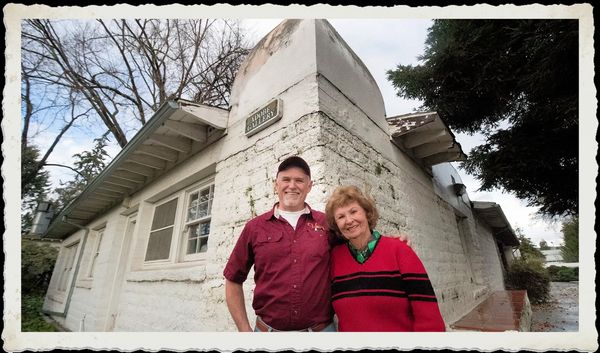Castro Valley History Museum

The Castro Valley History Museum is a newly formed nonprofit dedicated to preserving and celebrating our town’s rich heritage. While we’re still searching for a permanent, year-round location, our passionate board is hard at work cataloging artifacts, photos, and stories from local historians and community members—making them accessible online for all to explore.
In the meantime, we’re bringing history to life through pop-up exhibits, community events, and educational programs. Thanks to the Adobe Art Center, we’ll also host seasonal displays and welcome third-grade students to learn about Castro Valley’s past.
We’re building a museum for the community, with the community—and we’re just getting started.
Welcome to the Castro Valley History Museum
The goal of the Castro Valley History Museum is to preserve, protect, and share the rich Castro Valley history and local heritage of our town with the community, enriching and enhancing the lives of Castro Valley residents for generations to come through engaging museum exhibits.
Upcoming Events
02/14/2026
Castro Valley History Museum RETURNS!
11am
-
3pm
Adobe Arts Center in Castro Valley
02/14/2026
Castro Valley History Museum RETURNS!
Castro Valley History Museum is OPEN! At the Adobe Art Center at 20395 San Miguel Ave Castro Valley, CA from 11am until 3pm. Starting with ...
11am
-
3pm
Adobe Arts Center in Castro Valley
News
CHECK OUT ALL THE NEWS WITH CASTRO VALLEY HISTORY MUSEUM
History Videos
Castro Village History with Lucille Lorge
A Passion for CV History with Randy Vanderbilt
Castro Valley A Look Back In Time
Castro Valley Poultry with Lucille Lorge
Castro Valley books
Images of America: Castro Valley

Images Of America - Castro Valley, CA An officer in the Mexican army bequeathed his name to the crescent-shaped basin once known as Castro's Valley. Driven to ruin by squatters, drought, and gambling debts, he sold a portion of his cattle ranch to Methodist minister Zachariah Hughes, who built a church and school in what is now Crow Canyon. The one-room, redwood school Hughes christened Eden Vale educated about 50 children until a group from the burgeoning town to the south, "Hayward's," stole it by wagon in the dead of night. Undaunted, Castro Valley, delineated from its now friendly neighbors by hills, Lake Chabot, and an independent spirit, built and fully supported its own Redwood School. It has now developed into one of the most populous unincorporated areas in the United States.
Rancho to Ranch Homes: Mapping the Evolution of Castro Valley, California

This comprehensive book traces Castro Valley's transformation from Native American land to a modern commuter suburb, utilizing a wide range of online databases, local archives, and personal contributions from descendants of early settlers. It explores the area's complex history, from Guillermo Castro's acquisition of Rancho San Lorenzo to its evolution through agricultural changes, intense chicken ranching, and gradual suburbanization during World War II and beyond. The book also examines societal issues like racial discrimination and efforts to incorporate Castro Valley as a city. Richly illustrated with rare photographs, maps, and biographies, it offers detailed appendices on road names, subdivisions, and agriculture, supported by over 1,000 references for further research. The final chapter discusses preserved, lost, and at-risk historical elements and reflects on the town's uncertain future amid California's housing crisis.
Blog
Subscribe
Receive up to date information of events and information about the Castro Valley History Museum
This website uses cookies.
We use cookies to analyze website traffic and optimize your website experience. By accepting our use of cookies, your data will be aggregated with all other user data.






